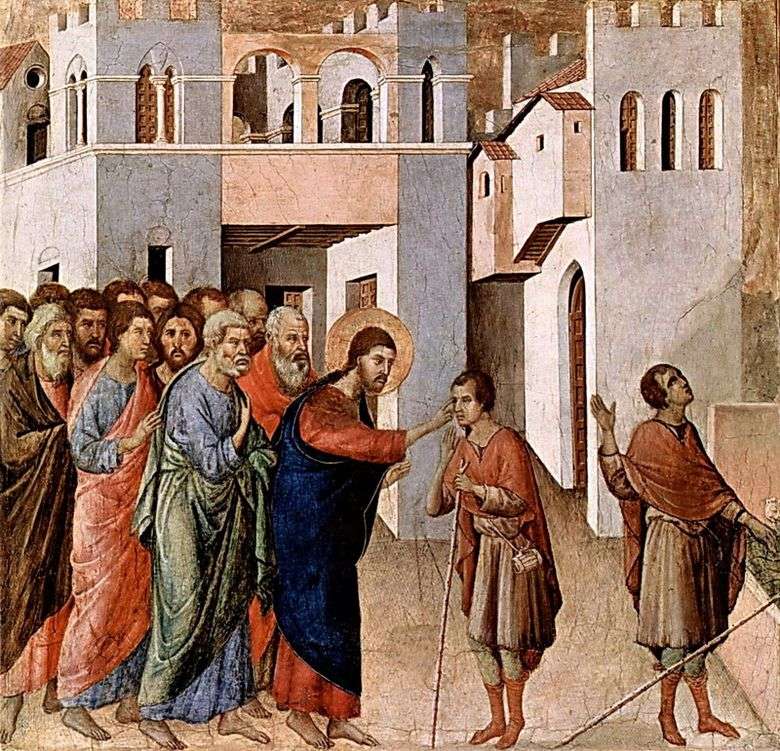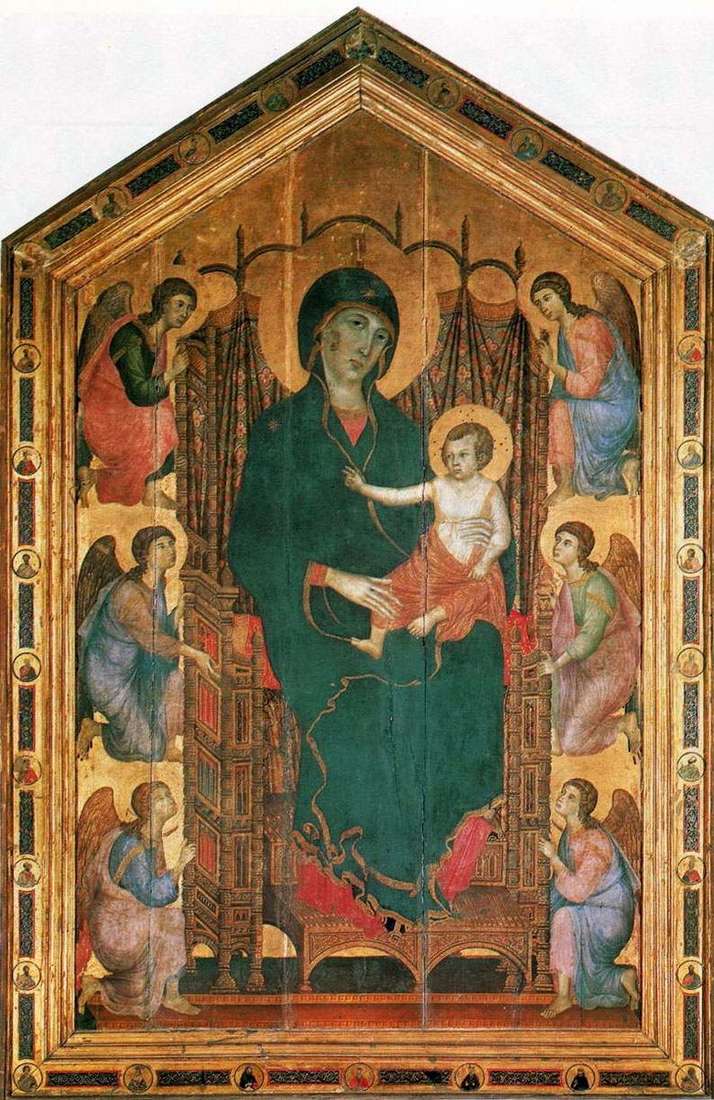
The founder of one of the leading schools in Italian painting of the XIV century. – Siena, Duccio di Buoninsegna worked in Florence and Siena. In his works, the artist followed Byzantine prototypes, but his art was already imbued with a new spiritual atmosphere that developed in Italy in the 13th – early 14th centuries. The images of Duccio received a softer interpretation, a subtle emotionality, in them the deviation of the master from the strict Byzantine canons is evident.
The artist endowed his characters with a spiritual beauty, in which a manifestation of sensuality is noticeable. His works are distinguished by the emphatic sophistication of the color range, the softness of the tones, the smoothness of the lines and the calm rhythm of the composition. This is also true of the work “Washing of the Feet”, which is part of the famous two-sided altar created by Duccio in 1308-1311, “Maesta.” This is one of the most grandiose monuments of Italian art of the XIV century.
In addition to the central part, actually “Maesta”, he included 53 compositions dedicated to the life of Mary and Jesus Christ, 16 images of prophets and apostles. In the XVIII century. the altar was divided into parts. Other famous works: the stained-glass window of the altar part of the Cathedral of Siena. OK. 1288. The Cathedral, Siena; “The Madonna of Rucellai.” 1285. The Uffizi Gallery, Florence; “Madonna and Child and Two Saints.” OK. 1300-1305. National Gallery, London.
 Maesta. Annunciation by Duccio di Buoninsegna
Maesta. Annunciation by Duccio di Buoninsegna Maesta. The Healing of the Blind by Duccio di Buoninsegna
Maesta. The Healing of the Blind by Duccio di Buoninsegna Madonna with angels and saints (Maesta) by Duccio di Buoninsegna
Madonna with angels and saints (Maesta) by Duccio di Buoninsegna Madonna Rucellai by Duccio di Buoninsegna
Madonna Rucellai by Duccio di Buoninsegna Lavado de pies – Duccio di Buoninsegna
Lavado de pies – Duccio di Buoninsegna Myrrh-bearers at the grave of the Lord by Duccio di Buoninsegna
Myrrh-bearers at the grave of the Lord by Duccio di Buoninsegna MaestasLa curación de los ciegos – Duccio di Buoninsegna
MaestasLa curación de los ciegos – Duccio di Buoninsegna Madonna Rucellai – Duccio di Buoninsegna
Madonna Rucellai – Duccio di Buoninsegna